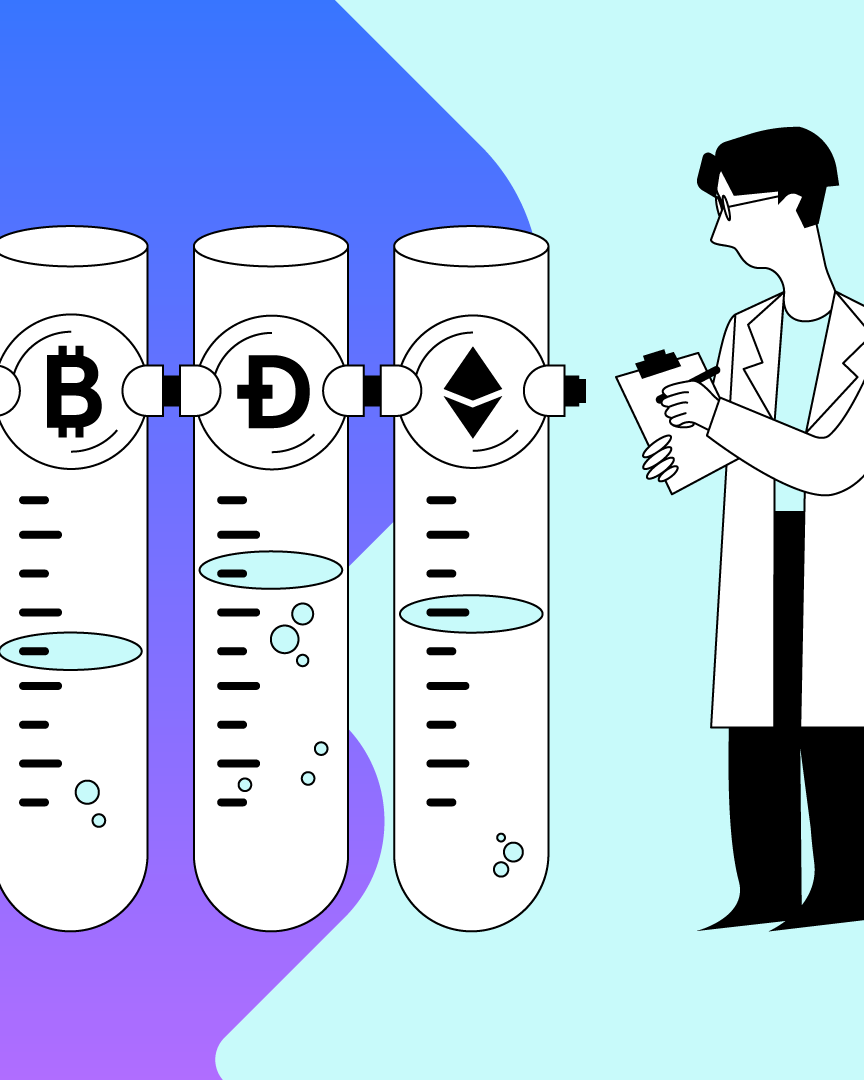3.02 Understanding technical analysis
This lesson helps you understand technical analysis in crypto trading.

As we discussed in the previous lesson, trading cryptocurrencies requires you to learn fundamental, technical, and sentiment analysis to make better decisions. While fundamental analysis focuses on company data, technical analysis centers on market activity. We will dive deep into the technical analysis and explain its characteristics and how it is different from fundamental analysis.
This lesson helps you understand technical analysis in crypto trading.
Contents
- What is technical analysis?
- Characteristics of technical analysis
- Technical analysis vs Fundamental analysis
- Advantages and disadvantages of technical analysis
What is technical analysis?
We define technical analysis as a study of the profitability of investments in various assets like cryptocurrencies, stocks, currencies, commodities, etc. Technical analysis is supported by numerous technical indicators and statistical analysis tools like moving average, standard deviation, median, etc.
The main objective of technical analysis is to determine the moment of purchase or sale of a given asset. It is made based on charts containing price changes, turnover values, order sizes, and technical indicators. It allows you to take all the factors into account which had/may have an impact on the supply and demand of the asset. Technical analysis interprets the market behavior by observing charts which in turn helps you to avoid inappropriate transactions to increase profits.
Technical analysis is not reading tea leaves or a self-fulfilling prophecy. It helps you to notice the repeatability of certain price movements of an asset and allows you to accurately forecast future prices. It focuses on the actual choices of market participants, price trends, predictable behavior, and dynamics of the relationship over time.
Characteristics of technical analysis
Technical analysts prefer to analyze the market trend instead of statistical data. Technical analysis is based on the three basic principles given below.
- The market discounts everything - The market price includes all available information about a given item such as its current micro and macroeconomic situation, and industry, regional, and political conditions.
- Prices are subjected to trends - The price of a given asset in a certain trend (uptrend, downtrend, horizontal) will remain in that trend as long as no clear signals are indicating a reversal of this trend.
- History repeats itself - Collective behavior of investors on a given asset or market repeats according to specific patterns. Therefore, you can make a price forecast in the future based on a study of the past.
Technical analysis vs Fundamental analysis
The primary distinction between technical analysis (TA) and fundamental analysis (FA) is the scope of information taken into account to analyze the market. When performing FA, you focus on global, macroeconomic, industry, and regional information about a given asset. On the other hand, performing TA assists you in making an investment decision by focusing on charts containing historical price changes.
You may think that TA and FA are two completely different types of analysis but a large group of enthusiasts follows a mixed approach. A part of the information needed to make an investment decision comes from FA and the other part comes from TA. Fundamental analysis helps you to answer WHAT asset to buy or sell. Whereas technical analysis helps you to answer WHEN it is a good time to buy or sell.
When following two methods, the analyzed value of an asset and time perspective plays an important role. Technical analysis is applicable in the short term and fundamental analysis is generally used to make long-term investments.
Advantages and disadvantages of technical analysis
Advantages of technical analysis i.e., the arguments of supporters
- Ease and simplicity of application - The main advantage of technical analysis is that it is simple to perform. Most investors begin their adventure of trading from technical analysis.
- The sentiment barometer - TA allows you to instantly examine the balance of forces in the market like what is currently in control of the price: supply or demand?
- A wide range of markets - TA allows you to access the situation on any market like cryptocurrencies, stocks, futures, bonds, commodities, etc.
- The tool for day traders - If there is no access to an order booklet, TA is the basic tool in the hands of day traders. It is necessary for investors who operate at low time intervals like minute charts.
- It allows you to make decisions quickly - TA allows you to make faster investment decisions without observing a huge amount of incoming data like financial reports, macroeconomic publications, etc.
Disadvantages of technical analysis i.e., opponents’ arguments
- Blind faith in history - Technical analysis assumes that history repeats itself which means the market participants react the same way as they did in the past at certain price levels. But sometimes it might not be a reliable approach due to the changing market context.
- Self-fulfilling prophecy - TA is based on another assumption that if a large number of people position themselves to play against a stock market scenario and take positions under it, it will come true. On the other hand, if a relatively small number of people align with an equally clear stock market scenario or market signal, then this will not come true.
- High subjectivity of the analysis - Each investor interprets some signals like price patterns in their own way. Moreover, there are no statistical and mathematical statements that would confirm the value predicted by some tools in TA.
- It’s more art than science - Technical analysis is partly science and partly true art. Notably, these opinions are even shared by professional technical analysts working in brokerage houses.
Technical analysis has both its pros and cons. It depends on some general principles that everyone believes and applies, which is why technical analysis may not work in certain situations. However, it is still the best approach for short-term trading.
We are going to explain how to perform TA by using various tools and theories in the coming lessons.
DE
This material does not constitute investment advice, nor is it an offer or solicitation to purchase any cryptocurrency assets.
This material is for general informational and educational purposes only and, to that extent, makes no warranty as to, nor should it be construed as such, regarding the reliability, accuracy, completeness or correctness of the materials or opinions contained herein.
Certain statements in this educational material may relate to future expectations that are based on our current views and assumptions and involve uncertainties that could cause actual results, performance or events to differ from those statements.
BB Trade Estonia OU and its representatives and those working directly or indirectly with BB Trade Estonia OU do not accept any liability arising from this article.
Please note that investing in cryptocurrency assets carries risks in addition to the opportunities described above.


















